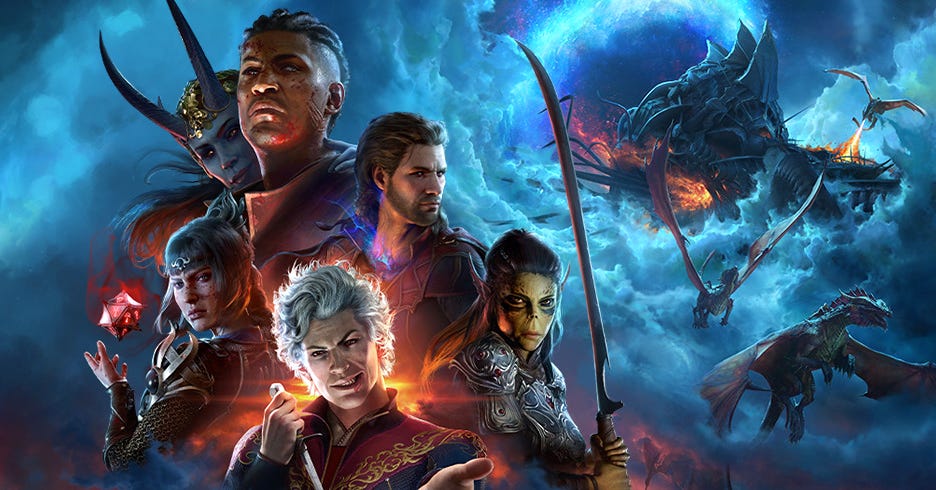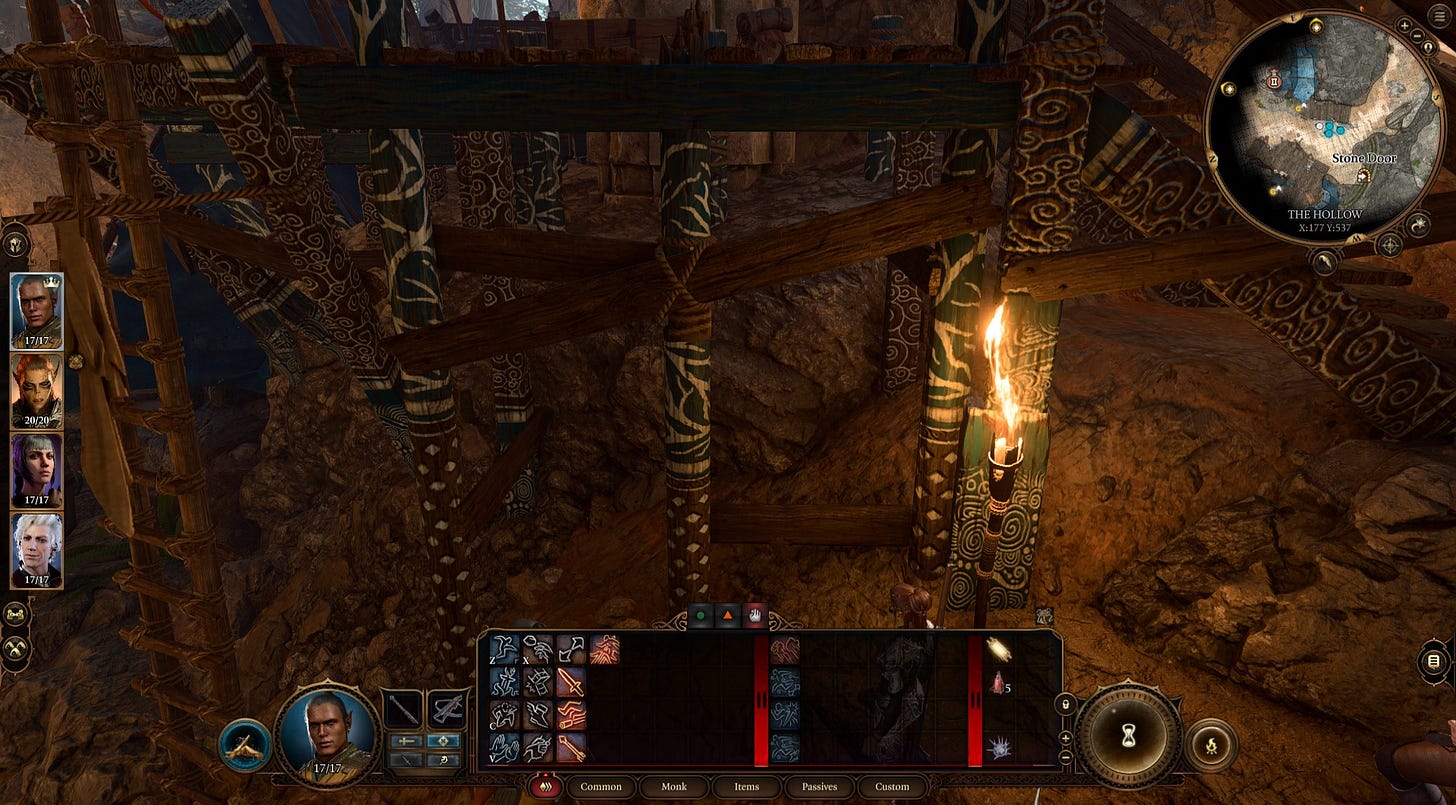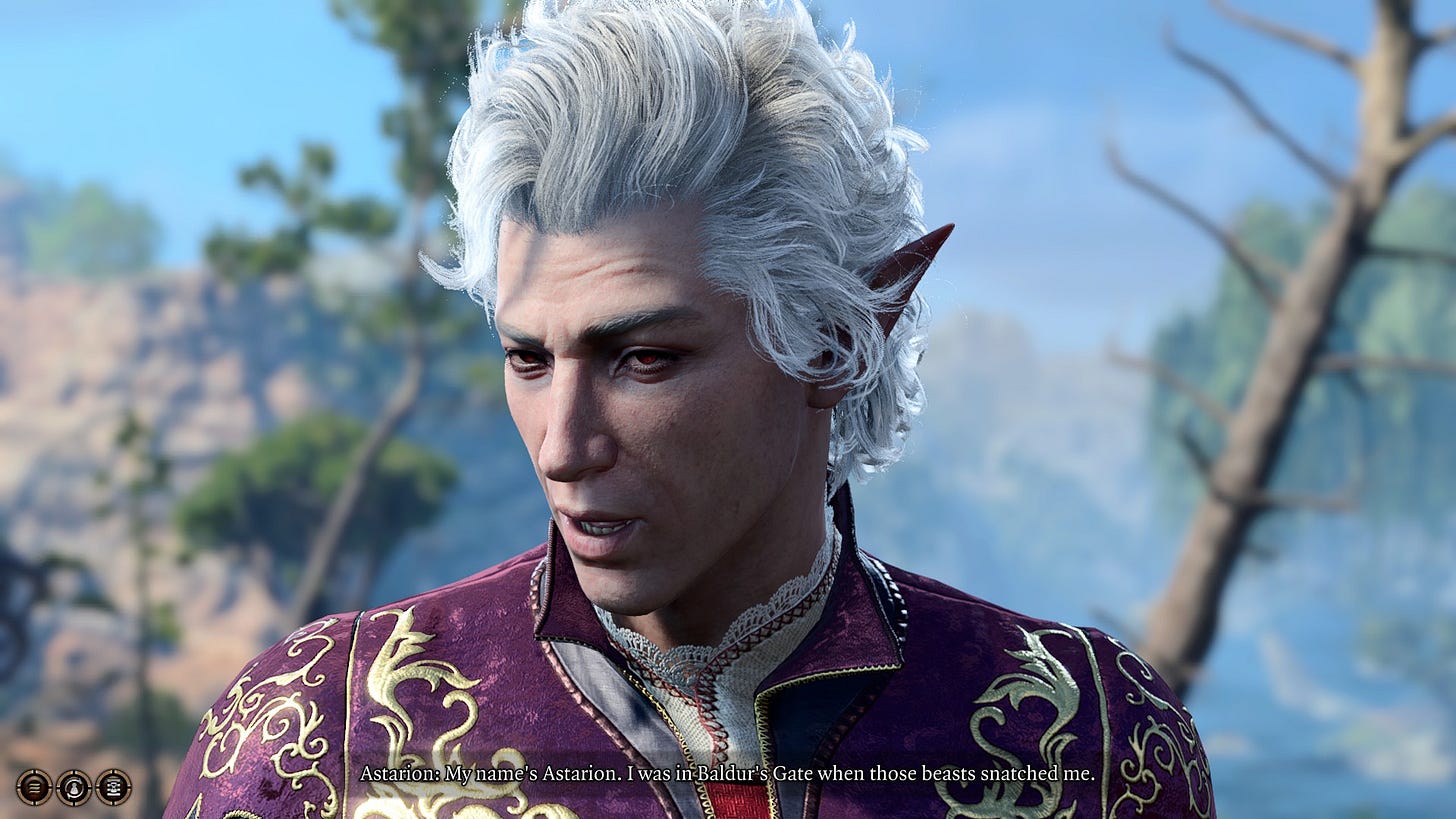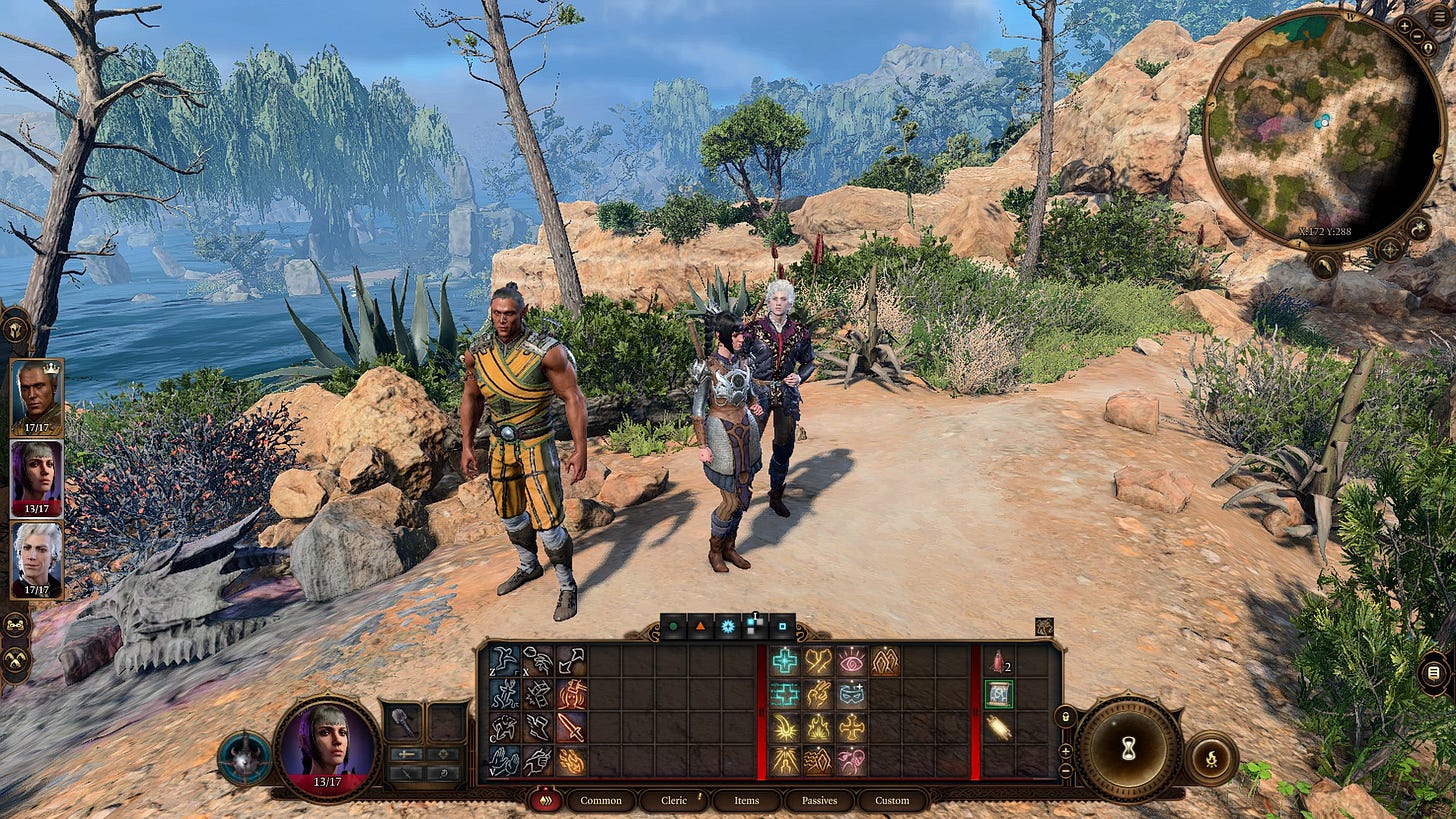Baldur’s Gate 3 review: Where epic wins meet epic fails
Larian's latest creation is setting a new standard that has AAA developers on edge regarding the future of gaming, but it also rolls a few natural 1's.
If some AAA game developers were to be believed, Larian Studios’ latest opus Baldur’s Gate 3 was an anomaly that shouldn’t be used to raise the standard for RPGs going forward.
The industry reaction to Baldur’s Gate 3 was quite surprising, considering that it’s a CRPG – a subgenre that doesn’t often reach household name status. Until now, at least.
My subconscious reaction to experiencing the game was a revelation as well.
When I knew I was reaching its conclusion, I did something so uncharacteristic that I surprised myself: I didn’t touch the game for two weeks. At that point, I didn’t want my adventure to end.
Yes, I’ve procrastinated using video games, but I don’t recall ever procrastinating a video game in my four decades of appreciating this hobby.
There have been games where I wished I could experience them all over again for the first time (e.g., The Witcher 2 and 3, Dragon Age: Origins), but with BG3, I felt sad, not because of a specific story outcome, but I was sullen because my adventure was almost complete.
It was also surprising that I felt this way because BG3 isn’t the only outstanding game that came out in 2023. OH MY GOD. Have you tried Tears of the Kingdom? That game is digital crack.
But I digress. BG3 is the overall best game I’ve played in the past 10 years.
It’s a fairly unique entry in the RPG genre that harkens back to the computer role-playing games of old, reminiscent of iconic titles like Planescape: Torment, Icewind Dale, and the early Fallout games. These games were often associated with rich rule systems, such as Dungeons & Dragons or GURPS (Generic Universal RolePlaying System).
Granted, CRPGs have experienced a renaissance in the past decade, with hits like the Pillars of Eternity, Divinity Original Sin, Wasteland, and Pathfinder games gaining popularity. However, they remain niche games with dedicated followings and haven't achieved massive mainstream appeal.
Sparkling highlights
BG3, however, changed all that. Here are some of the things that makes it unique:
As a CRPG, it embraces the isometric view by default.
Despite being a CRPG, it surprisingly comes with an immersive third-person perspective.
It uses the 5th edition of D&D rules, which is simpler than previous versions, but provides a good amount of gameplay depth.
All its conversations are fully voiced – a rarity among CRPGs, shared only with games like Divinity Original Sin 2 and Disco Elysium.
Characters come to life through motion capture, a rare treat in the CRPG subgenre.
It incorporates hours upon hours of cinematic sequences. CRPGs usually don't receive the AAA cinematic treatment because of their higher production costs, which can be a challenge for smaller game developers with limited budgets.
You may have seen or read the articles about the game: it includes an encounter with a bear. Weird, yes, but it’s a key part of the game’s uniqueness.
Please note that a CRPG with a AAA-game-budget isn’t the only reason why Baldur’s Gate 3 is exceptional. Well, that’s what I’m going to talk about today.
Here are the gems that make BG3 glitter.
Visually masterful
The first thing that struck me about BG3 was its outstanding visuals. Unlike the graphically demanding Crysis back in 2007 or last year’s Alan Wake 2 (which, let's face it, likely won’t run on my PC), this game impresses without overtaxing my system. Not too much anyway.
The level of detail is something to behold. Take, for instance, the druids' Emerald Grove: the wooden scaffolding there isn’t just functional; it's adorned with intricately painted patterns. It's these small touches that caught my eye.
The attention to detail extends to the armor and equipment. Each piece boasts little flourishes that become apparent upon closer inspection.
But it's the characters, whether NPCs or companions, that truly showcase the game's visual prowess. Thanks to motion capture, their faces are expressive in a way that's rare in CRPGs. I saw subtle nuances — a slight raising of the eyebrows, a gentle frown — that bring these characters to life.
And let's talk about those vistas! The draw distances are vast, offering expansive views that are a feast for the eyes. This level of graphical fidelity isn’t something I come across every day, particularly in isometric CRPGs. BG3’s visual design isn't just good; it's cohesive and timeless.
Note: While BG3's visuals initially impressed, I encountered performance challenges in the game's later stages, particularly towards the end of Act 2 and throughout Act 3, in the months following its August 2023 release.
On my setup, a Ryzen 3600 paired with a GTX 1660 Super, framerates frequently dipped below 30 FPS in densely populated areas, even with FSR 1.0 set to Performance mode.
Larian Studios responded to these issues by releasing several patches aimed at optimizing performance. These updates have considerably improved stability in previously demanding areas, making them more manageable.
Humming combat
Jumping into BG3’s turn-based combat was a breeze. I've always had a soft spot for the D&D system, even if the game uses the much-simplified 5th edition.
Some experience with Divinity: Original Sin 2 certainly made it easier for me. Knowing how to manipulate the environment to my advantage helped me set up creative ways to defeat my enemies.
My initial concern was how my play group – a mix of casual and core gamers – was going to react to everything when we play BG3’s multiplayer, given D&D’s niche appeal.
To my relief, and maybe a bit to my surprise, they were all for it. The magic lies in how Larian Studios finessed simultaneous actions into the multiplayer aspect, transforming what could’ve been a sluggish exchange into brisk, dynamic battles.
We spent less time waiting our turn and more time communicating, strategizing, and taking action. It was refreshing to see how our ragtag team of murderhobos played turn-based combat in Tactician difficulty and consistently succeed.
Rich details
BG3 is brimming with fun little gameplay intricacies that deepen the experience in many unexpected ways. Here are a few standout moments:
If I have Astarion, a vampire companion, bite Karlach, a Tiefling with an ever-burning engine for a heart, the result is unexpected and hilarious: Astarion will catch fire and take some fire damage.
I can pick up corpses or living foes and throw them at other foes for damage. I can also grab and hurl teammates to achieve the same effect. If a foe flings a grenade at me, which usually doesn’t explode right away (in turn-based mode, at least), I can pick the grenade up and toss it back.
If a vendor sees me stealing something that’s not mine, their attitude towards me will change, and they’ll charge me more for their wares.
There are spaces in the world where halflings can’t always squeeze into. In such burrows, shapeshifting into something smaller or summoning a familiar lets me explore these places.
The chasms in BG3 aren’t just for show. I can shove enemies off high places and they’ll either take some damage or plunge to their death.
Bards can put on a musical performance and people will flock and show their appreciation with gold and/or clapping. I prefer the former.
Smooth controls and interface
I found BG3’s controls and menus easy enough to grasp from the get-go. There’s a gentle learning curve, but the tooltips for everything certainly help.
Despite my extensive history with the subgenre, I've played recent CRPGs whose interfaces overwhelm the heck out of me. Looking at you, Pathfinder games. Despite playing Kingmaker for hundreds of hours, I never felt truly comfortable with its UI.
Yet, with BG3, the adjustment period was fairly short. Pretty impressive considering my lack of experience with D&D's 5th edition (3.5e is my jam).
As for the controller setup, I found it less intuitive than the traditional keyboard and mouse scheme, which is straightforward with its point-and-click simplicity. However, what's remarkable is how BG3 still manages to feel like a proper CRPG even when played with a DualShock 4. The game doesn’t lose its depth or complexity; it's fully controller-compatible, and Larian somehow made it work.
Using a controller oddly makes BG3 feel like a somewhat different game. This reminds me of the approach taken by BioWare with the Dragon Age and Mass Effect series, which leaned into making games more accessible for console players, sometimes at the cost of simplifying gameplay elements.
This design decision led to overlapping key assignments or simplified systems (e.g., Dragon Age: Origins felt like a refined, updated version of the previous Baldur's Gate games, but its sequel Dragon Age 2 dumbed down companion armor).
BG3, however, avoids this "consolification" trap. Even with a controller in hand, the game's complexity and strategic depth remain intact.
Despite the game's adaptability to controller use, I prefer the keyboard and mouse setup because it lets me do things with fewer clicks and keypresses than a controller can.
Weighty choices
The decisions I made in BG3 felt impactful and making them wasn’t easy. There were times when each option felt equally bad outcome-wise, and I relished the difficulty of such dilemmas.
Some choices led to immediate repercussions, while the implications of others unfolded dozens of hours later.
Interestingly, the game even allows for a pacifist run, showcasing its flexibility and depth. It’s so well-written that it took into account nearly everything that happened and everything I did, and the story adjusted to those circumstances.
BG3's story reacts dynamically to everything that happens, including the actions I took and the death of essential characters, illustrating that the game takes into account nearly all my actions.
Speaking of pacifist, not every conflict is solved through combat. I’ve managed to talk my way out of sticky situations, and they are every bit as satisfying as cutting someone up. I think I get the same amount of experience points anyway.
If I feel like killing a few important NPCs along the way, the story won’t glitch so easily. It can eventually but this will take quite a bit of slaughtering. That’s because Larian has backup characters, even for backup characters.
Mostly compelling writing
The tale that BG3 weaves is compelling, with catastrophic stakes and personal ones. This journey took me through all manner of circumstances, including:
Betrayal (by others and me).
Sacrifice.
Devotion.
Perspective-shifting.
Shenanigans (mostly by me).
Absolute power.
Search for meaning.
All in all, there are just too many to name and I don’t want to spoil the story for you.
Lore exposition in BG3 felt mostly organic, a quality I particularly appreciated, unlike so many RPGs where characters tend to unload world details without much provocation.
The characterization for most of the origin companions is excellent, with a couple of standouts while the rest, I found, leaned towards the pedestrian side. It’s fascinating to witness their growth; they start and end the campaign as noticeably different individuals.
This evolution isn’t only dramatic but also gradual, unfolding across dozens of hours without ever feeling padded.
The dialogue throughout is smart as a whole. It has many instances of humor from various exceptional characters, including some devils, a droll hag, a couple of companions, and a reptilian trader, among others.
Admittedly, however, there were some companions I couldn’t stand. Most of this has to do with how romance and relationships worked. I’ll delve more on this later in the parts I didn’t like.
It’s a good thing the game lets me kill anyone I want! This will halt the story’s progression but it’s certainly doable.
While BG3’s prose doesn’t indulge the philosophical language of Planescape: Torment, Larian’s creation can certainly hold its own due to its strong writing consistency amid the sheer quantity of its branching paths.
Vast and replayable content
This is a long-ass game. My first BG3 playthrough spanned a substantial 130 hours, and there isn’t a single ounce of filler, grinding, or tedious random encounters. It’s pure, unadulterated D&D adventuring until the end credits.
The whole experience is absolutely fat free.
But it doesn’t end there; I also have a multiplayer campaign, which as of this writing is unfinished. We’ve just started Act 3, and there’s still plenty of game to be played.
I also have a second single-player playthrough starring a morally ambiguous monk harboring a mysterious past. This is my Dark Urge campaign, where I play someone with amnesia.
In addition to the lengthy campaign, BG3 has a wide selection of character classes to choose from. Some classes are more fun to play than others, although this boils down to personal taste. Plus, there’s a considerable variety of builds to try, including multiclass.
There are six origin characters – pre-designed and each with a unique story to tell. They have different personalities, quirks, classes, backstories, and motivations. Aside from being recruitable companions, each can be selected as the main character.
The point I’m making is that the game is worth at least a couple of playthroughs because of the sheer amount of content and the variety of experiences that builds and classes offer. To me, BG3 promises countless hours of immersion and fun, making it well worth its price tag.
The only thing missing now is a Dungeon Master mode where I can create campaigns, just like in Divinity: Original Sin 2.
Strong portrayals
In BG3, the performances weren’t just convincing; they boost the narrative. All the companions, in particular, were endearing in their own way.
Standouts for me include Devora Wilde as Lae’zel, Jennifer English playing Shadowheart, and Neil Newbon being everyone’s favorite bloodsucker.
Lae’zel oozed confidence and conveyed strength. She was abrasive right out of the gate, but her growth was heartfelt. So was Shadowheart, who was initially aloof, but her internal conflict felt real.
Astarion’s razor-sharp wit and character development are impressive as well. In fact, Newbon won Best Performance at the 2023 Game Awards. The interplay between the script and Newbon's execution shows how important both elements are to the BG3 experience.
The writing provides the framework, but it's the actors' performances that bring this depth to life, showing an effective collaboration between story and acting.
Ethereal music
It’s not just the voice acting that heightens the overall experience. The music is also outstanding.
The game has an earworm of a song – “Down by the river,” and its chorus (i.e., “Down, down, down by the river”) is reprised in several parts of the BG3 soundtrack. Its reappearance throughout the campaign is haunting and I love it.
There are a few other excellent tunes in there, including (but certainly not limited to):
Nine Blades – Its guitars and harmonizing vocals are simply exquisite.
The Colors of Underdark – Captures the mood of the realms below. Eerie.
Raphael’s Final Act – My new favorite character-focused music in all of video games. Sung by who else but Raphael.
I Want To Live – Its melody is irresistible. The version with vocals gives me goosebumps. The lyrics are mournful. Quite possibly the best song in BG3.
The rest of the soundtrack is terrific as well. I listen to these songs even when I’m not playing the game.
Unearthing the blemishes
While BG3 dazzles with its narrative, visuals, and character portrayals, no game is perfect. This one, in particular, curls out several substantial turds, and it’s essential to explore them. Here are the “germs” that contrast the shining “gems.”
Performance issues
Before the fourth patch in November 2023, I had to make do with FSR 1.0 and it was pretty bad. Even at Ultra Quality settings for FSR, textures are muddy, as if Vaseline was smeared over them.
Thankfully, FSR 2.2 is far better. Details now look clearer even when zoomed in.
Today, Act 3 now runs better, staying above 30 FPS on average on my PC. But even with various patches, there are still occasional performance dips, although this probably comes with the territory as Act 3 is CPU-heavy.
This, however, is still a stark contrast to the smoother 70+ FPS that I consistently experienced in Act 1 and parts of Act 2.
Navigation and camera quirks
Using the mouse and keyboard to move between different floors is clunky.
For instance, to climb or descend to the next level inside a building, my character needs to physically navigate stairs because BG3 lacks a direct option to select floor levels. This design choice makes exploration frustrating at times, especially in densely structured areas.
Indoor navigation is made worse by how the camera behaves. It doesn't always offer a clear, transparent view of interiors, especially when structures span multiple levels.
Walking through doors is a prime example: Unless the mouse pointer is positioned exactly on the other side of the door, characters tend to go to an unintended location—often another floor altogether—due to imprecise clicks that frequently hit the door frame instead.
This, however, isn’t some nitpick; it happens frequently and is downright tedious.
The camera is weird during combat as well. It tends to abruptly zoom in after a character kills an enemy on the battlefield. This sudden change isn’t a major issue for me, but it sometimes messes with my awareness of where pieces are located, leaving me to scramble to readjust my view.
Spellcasting snags
Selecting the area of effect for certain offensive spells is sometimes finicky. The selection area typically snaps to enemies – or worse, allies – on the battlefield, which I presume is implemented for convenience.
The problem is when I want to line up a fireball or some other AOE spell directly between the enemy and my companions, and I don’t want it to snap automatically to avoid friendly fire.
I later learned that taking the Evocation subclass allows spell sculpting, so my companions won’t take damage even when they’re inside the AOE. This is convenient, but I’d rather the game provided an option to disable this snapping for more precise AOE selection.
Cutscene annoyances
BG3 isn’t just a single-player RPG. It has a major multiplayer component, so I understand the rationale behind the inability to pause cutscenes when playing with other people.
Because in multiplayer, maintaining synchronization between players’ experiences is vital.
But why, for the life of me, is there no option to pause cutscenes when I’m playing solo? Consider that, as I’ve said earlier – this is a long-ass game. It’s full of long-ass cinematic sequences and conversations.
BG3 is also rated Mature 17+ and played by adults. Life's interruptions don't pause for my gaming sessions. When someone knocks on my door while I’m in the middle of an important cutscene, I need to reload the game to catch up on missed dialogue.
Bully for me if this cutscene was right after a tough boss battle and my last save was right before the fight.
One more thing – I really loathe the ever-present mouse pointer during these cutscenes. It breaks immersion.
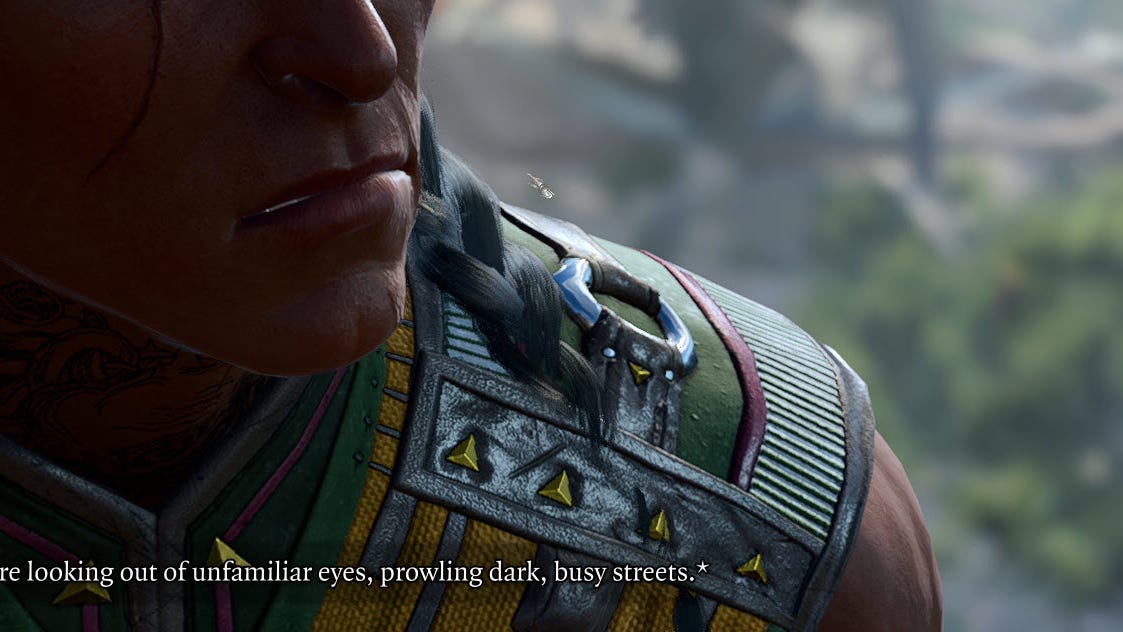
Romance and relationships are weird
This aspect of BG3 is one of my largest problems with this game, which is supposedly all about choice: All companions are “playersexual.” This means they’re interested romantically with my character, and they have no defined preferences.
Unlike other RPGs where characters have distinct sexual orientations and preferences (e.g., Judy in Cyberpunk 2077 is exclusively interested in women, Dorian in Dragon Age: Inquisition is available only for romance with male characters), BG3 opts for a less nuanced route.
Every romanceable companion is potentially interested in the player character; they don’t bat for any team other than the player’s.
Worse still, this broad approach eliminates having friendships in the game, and it’s particularly more noticeable among male companions. It’s either full-on romance or outright rejection; there’s no middle ground for close friendship, camaraderie, or friendly fondness.
Oh, but there’s more. You see, when I talk to my companions, I try to be nice and supportive because if I stay on the asshole path long enough, they’d leave. The problem is that there are dialogue options that look friendly at first glance, but they’re actually romance options.
So even when I’m careful with my responses, certain companions would come onto my character too strongly. Soon enough, I’d walk into a romance cutscene without knowingly choosing it.
Additionally, after the pinnacle of these relationships - when characters finally do the deed - the depth of interaction between them plateaus. Beyond initiating smooches, post-intimacy interactions feel notably shallow; it misses deeper conversations or meaningful relationship progression. This contrasts sharply with the game's initial efforts to portray relationship growth organically.
While every RPG is pretty much like this, it’s such a missed opportunity for BG3 to explore the complexities of intimacy beyond the physical act.
While the latest patches have smoothed out some of the more jarring advances by some companions, the core issue remains: The game still lacks genuine camaraderie. Despite improvements, BG3 misses the mark on capturing friendship bonds that give depth to character interactions beyond romance.
Complex themes lack nuance
I really appreciate nuanced storytelling that is similar in complexity with real-world issues. BG3’s narrative and design choices, however, often lack the subtlety I hoped for.
The game's portrayal of social dynamics—like casting all refugees as victims and their detractors as unkind—oversimplifies the moral landscape, reducing it to a binary of "good" versus "bad." This black-and-white depiction misses the opportunity for a more nuanced exploration of these issues.
Furthermore, the demographic makeup of the city of Baldur’s Gate, inspired by a medieval fantasy Europe yet featuring diversity similar to present-day California, raises questions.
This is further complicated by the portrayal of non-human races with clearly human ethnicities, blending fantasy elements with modern racial diversity in a way that sometimes feels more contrived than coherent.
Listen, while magic in the D&D universe makes transportation easier and distant lands more accessible, it’s important to remember the different levels of magic accessibility. High-level spells like teleportation, which could justify the game’s widespread diversity, is usually rare and often out of reach for common people.
However, BG3 seems to overlook these subtleties, choosing instead for modern-day diversity quotas that, while well-intentioned, feel more tokenistic than organically woven into the fabric of the game’s world-building.
Let me be clear—it’s not diversity itself that concerns me; when integrated organically, diversity enriches storytelling. My criticism lies in BG3’s approach to integrating present-day values without the complexity and depth they deserve.
Reflecting on the decade’s best
Despite my critical view on various aspects of BG3, particularly concerning choice and immersion, I stand by my initial assessment: it’s the standout game of the last decade.
Larian Studios have made notable strides in addressing technical issues, and I expect even more enhancements with the inevitable release of a definitive edition.
The camera and navigation quirks, while frustrating, don't fundamentally undermine the experience. They're really more of a nuisance. That being said, the inability to pause cutscenes is a huge oversight, especially for players balancing gaming with real-life responsibilities.
The game's approach to relationships also needs serious reevaluation. The lack of nuanced interactions beyond romantic entanglements or flat rejections dumbs down complex potential dynamics into binary outcomes. Even more disappointing is the treatment of relationships post-intimacy; after characters do it, the interactions become surprisingly shallow. It’s as if Larian’s writers forgot what happens afterwards.
The immersion-breaking issues, notably the game's advocacy-driven approach that sometimes prioritizes modern sensibilities over creating a believable fantasy world, highlight a common trend in modern game development. Despite this, fortunately, Baldur’s Gate 3 still manages to deliver a compelling story within a richly crafted universe.
Note, however, that Larian’s occasionally heavy-handed execution can detract from the experience. There were times when this pulled me out of the game's immersive environment. Despite these moments, BG3 stands as a remarkable achievement. It’s the best game I’ve played in the past decade, but it’s still not the finest I’ve experienced so far.
BG3's emergence has been pivotal, notably ruffling the feathers of some AAA game developers. Its success highlights gamers' disdain for predatory monetization tactics like microtransactions and season passes, signaling a clear preference for consumer-friendly practices.
In today's gaming landscape, where financial gain often overshadows player satisfaction, BG3 emerges as a cause for hope. By marrying exceptional quality with high production values and a strong value proposition, Larian’s creation challenges the industry to reconsider its priorities.
Currently, BG3 stands as an outlier in an industry still grappling with balancing profit and player experience. Its success serves as a crucial call to action, advocating for a future where games of such caliber become the standard, not the exception.
We need more games like Baldur’s Gate 3—titles that respect their audience and set new standards in quality, storytelling, and player respect.



